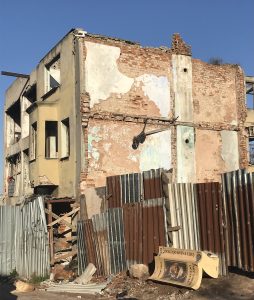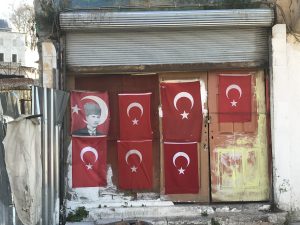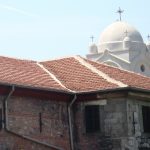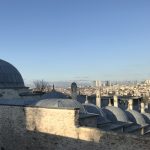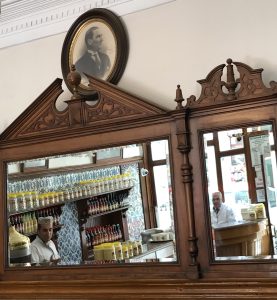 “Loyalty”
“Loyalty”
Unlike so many districts of İstanbul, Vefa, which lies to the east of Atatürk BulvarI, is known not so much for a historic monument as for a cafe, the Vefa Bozacısı, which used to be one of the few places in Turkey where you could try boza, a fermented barley drink (today you can even buy it in supermarkets).
There are, however, a number of attractive minor Byzantine and early Ottoman monuments to look out for as well.
Around Vefa
Assuming you are walking uphill from the Golden Horn along Atatürk Bulvarı, you will find Vefa by turning left along Cemal Yener Tosyalı Caddesi immediately in front of the great Aqueduct of Valens. This will take you past the battered but beautiful facade of the Mektep Recai Mehmed Efendi, a primary school with a beautiful sebil (public water dispensary) dating back to 1775. Imagine going to school in such a lovely building!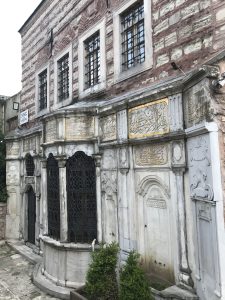
To find what is probably the most important local monument, the Kilise Cami (Church Mosque), turn left along Katip Çelebai Caddesi which becomes Vefa Caddesi. This will take you past the famous Vefa Bozacısı (Tel: 0212-519 4922), dating back to 1876, where you can pause to sample boza in its cool interior. A mug kept in a glasscase set into the wall was apparently used by Atatürk for the same purpose. A shop across the road sells the chickpeas with which Turks like to top off their boza.
Almost next door is the restored Kovacılar Cami dating back to 1514 but of no great architectural interest. Shortly afterwards you will pass the Atif Efendi Kütüphanesi dating back to 1741-42. It looks more like some of the hans behind the Kapalı Çarşı than a place where people would come to read but is, nonetheless, the second oldest library to survive in İstanbul.
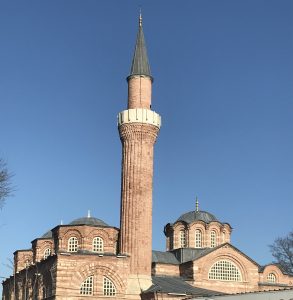 At this point you need to turn into Tirendaz Sokağı to find the Kilise Cami which seems to have started life between the 10th and 12th centuries as the Church of St Theodore. It probably acquired the mosaics in its narthex during the 14th century since they bear some resemblance to those in the Chora Museum. The façade of the building incorporates many pieces of Byzantine marble, which makes it well worth a look even if you don’t manage to get inside. The church-mosque was completely restored in the 2010s.
At this point you need to turn into Tirendaz Sokağı to find the Kilise Cami which seems to have started life between the 10th and 12th centuries as the Church of St Theodore. It probably acquired the mosaics in its narthex during the 14th century since they bear some resemblance to those in the Chora Museum. The façade of the building incorporates many pieces of Byzantine marble, which makes it well worth a look even if you don’t manage to get inside. The church-mosque was completely restored in the 2010s.
To find Vefa’s other historic buildings return to Cemal Yener Tosyalı Caddesi and turn left. At the junction with Dedeefendi Caddesi stand the remains of the Ekmekçizade Ahmed Paşa Medresesi dating back to 1618 and built for a man who became First Lord of the Treasury (Defterdar) and died one of the richest Ottomans in the world.
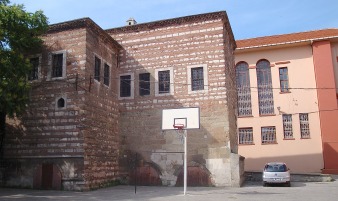
If you then turn right along Dedeefendi Caddesi you will pass, on the right, the Vefa Lisesi (High School) housed in a fine example of First National architecture designed by Kemaleddin Bey in the 1920s. In its grounds stands a much older monument, the early 18th-century Şehid Ali Paşa Kütüphanesi (Library), built for a son-in-law of Sultan Ahmed III.
Facing it across the street is what was originally the 16th-century imaret (soup kitchen) of the Şehzade Külliye (complex), now sadly separated from the mosque by the road although it has at least been restored.
Transport info
Frequent buses from Eminönü run up Atatürk Bulvarı and stop near the junction with Cemal Yener Tosyalı Caddesi (in 2024 a small theatre on the corner was being rebuilt). Alternatively you can take the tram to Beyazıt or Aksaray and wend you way up to Vefa via Şehzadebaşı.
Nearby areas
